Overview: Ahead of the much-anticipated speech by Federal Reserve Chair Powell, the Fed funds futures are pricing in about a 70% chance of a 75 bp hike next month. The US 10-year yield is up nearly five basis points today to 3.07% and the two-year yield is firm at 3.38%. Asia Pacific equities were mostly higher, with China the main exception among the large markets, after US equities rallied yesterday. Europe’s Stoxx 600 is off about 0.3% to bring this week’s loss to a little over 1%. It would be the first back-to-back weekly loss in two months. US futures are seeing yesterday’s gains pared. Europe’s benchmark 10-year yields are mostly 4-8 bp higher. The greenback is mixed with the European currencies mostly higher, led by the euro, pushing above parity where options for 1.5 bln euros expire today. The dollar bloc and yen are nursing losses. The firmer euro tone appears to be lending support to the central European currencies, while the South African rand and Thai baht are off a little more than 0.5% to pace the declines. Gold set the high for the week yesterday near $1765 and is struggling to stay above $1750 today. October WTI is up 1% today and 3.4% for the week. It posted an outside down day yesterday to fall 2.5% but is consolidating quietly today. Europe’s natgas benchmark is off 0.5% to pare this week’s gain to around 25.2% after rallying 20.3% last week. US natgas is gaining for a third day, up 2.2%. It was nearly flat on the week coming into today. Iron ore rose almost 3% to bring this week’s gain to 5.2%, the strongest weekly advance this month. September copper is up 1.4% after yesterday’s 1.5% advance. December wheat is firm after a four-day rally was snapped yesterday. Poor weather is seen behind the week’s 3% gain.
Asia Pacific
Tokyo's August CPI, which does a good job of reflecting national forces, rose more than expected. The headline rate rose to 2.9% from 2.5%, its highest in 30 years. The core measure, which excludes fresh food, stands at 2.6%, up from 2.3%. Several banks are now warning it could surpass 3% in Q4. A little more than half of Japan's inflation stems from fresh food and energy, with which CPI rose 1.4% from a year ago, up from 1.2%. The Bank of Japan meets on September 22 and is expected to remain the outlier among the high-income countries and maintain the current policy setting, with the target rate at -0.10%.
There are three developments in China to note. First, after several initiatives, which individually have been played down by observers as not going far enough, China's high-yield bond market, dominated by the property sector, have shown some new domestic interest. The back-to-back gains are the first in four months. Second, there appears to be some progress in US-China talks about US regulators access to the accounting records of Chinese companies that list on American exchanges. These Chinese companies have been instructed to prepare audit working papers to bring to Hong Kong to be reviewed by US officials. Although mainland equities have languished this week (CSI 300 is off 1%), Hong Kong stocks have rallied. The Hang Seng gained 2% this week, half of which came earlier today. The HK China Enterprise Index (mainland companies that trade in HK) rose 3% this week. Third, dubbed teapot, the independent oil refiners in the Shandong province have cut their run-rates to 61.3% this week, the lowest since May. This seems to reflect the poor state of the economy, hampered by the extreme weather and shortage of electricity.
The dollar rose 2.65% against the yen last week but has gone nowhere in recent day. It continues to chop in Tuesday's range (~JPY135.80-JPY137.70). The ranges have gotten steadily narrower. Today's range has been roughly JPY136.40 to JPY137.15. Two images come to mind, a spring coiling (dollar bullish) or a sideways affair. Momentum indicators are mixed. The exchange rate still seems sensitive to US interest rate developments. The Australian dollar reached a six-day high yesterday near $0.6990, and although it closed firmly, there has been no follow-through buying. It has consolidated down to $0.6950. A convincing move through $0.6940 may refocus attention on the downside. The PBOC again set the dollar's reference rate lower than the market (Bloomberg survey) expected at CNY6.8468 vs. CNY6.8542. The gap was half of yesterday's, which was the most since February 2020. Nevertheless, the market still extended the greenback's gains. Around CNY6.8620, the dollar is up about 0.2% today and 0.65% for the week. If sustained, it will be highest weekly close since August 2020.
Europe
The record of last month's ECB meeting, where it delivered its first rate hike with a half-point move did not tell us anything we did not already know. First, the rise in inflation to near 9% was the catalyst for the rate hike. That there were some who wanted a quarter-point move is not surprising. The preliminary estimate of this month’s CPI will be released on August 31. The month-over-month pace is expected to rise by 0.3% after a 0.1% gain in July. However, the base effect will translate this in a slightly slower year-over-year rate (8.8%). The core rate is expected to be steady at 4.0%, though the risk is on the upside. The market has fully priced in a 50 bp hike at the September 8 meeting, the swaps market is consistent with around a chance of 75 bp move, which seems a bit exaggerated. While there is some debate in the US whether inflation has peaked, in the eurozone this may be a brief respite.
Like the FOMC minutes, the ECB's record of its meeting should not be understood as an objective report of the meeting, but another channel by which officials communicate to the market. In its record, the ECB insists that the 50 bp rate hike should be seen accelerating removal of accommodation, what it calls front-loading, rather than raise the terminal rate. While many press accounts repeated it, the market seems less sanguine. Consider that on July 1, the swap market had the policy rate at 1.23% in mid-June 2023. Now it is 1.77%. ECB officials were cognizant that the economies were slowing, and a recession may be near. However, in what seems to be an innocuous comment observed that governments may be better positioned to address it. What is striking is that this goes against ordoliberalism, which Draghi and others said its part of the ECB's DNA. Ordoliberalism reject Keynesian demand management through fiscal policy.
We had thought there was a quid pro quo at the July ECB meeting, which allowed for the larger rate hike in exchange for the new Transmission Protection Instrument. However, if this was case, the hawks have the advantage. There appear to be so many hurdles to its use that, like the Outright Market Transactions (announced with Draghi's "whatever it takes") it may never be used. The ECB's record indicated that the Governing Council would take into account analysis by the EC, the European Stability Mechanism, the IMF, "and other institutions", alongside the ECB's own analysis, with no ranking provided. Unlike the OMT, which was to be triggered at a country's request, the TPI is done at the ECB's discretion.
The euro slipped through yesterday's low by a couple hundredths of a cent in Asia but has come back bid in Europe, and pushed above $1.00, where options for 1.5 bln euros expire at the same time today that Fed Chair Powell is scheduled to begin presenting in Jackson Hole. The single currency has not closed above parity this week and set a new 20-year low on Tuesday slightly ahead of $0.9900. It seems like the recent price action is more about market positioning than new developments. Sterling set a range on Tuesday between $1.1720, a new 2-year low, and $1.1880. It has not traded out of that range in subsequent action. Near $1.1825, sterling is virtually flat this week against the dollar and about 0.35% first against the euro. Press reports suggest that Truss, who looks set to become the new Prime Minister in a couple of weeks could trigger Article 16 that would allow the suspension of some parts of the Northern Ireland protocol as early as September 15, when the existing arrangements that allowed for easier checks expire. Between this, Italy's election on September 25, and the ongoing energy and extreme weather challenges cast a pall over the outlook.
America
Fed Chair Powell's long-awaited speech at Jackson Hole is a few hours away, and the market is pricing in about a 70% chance that the Fed hikes 75 bp next month. Of course, there is important data due before the FOMC meeting concludes on September 21 including the jobs report next Friday and CPI on September 13. Still, it is unlikely that either report changes that overall assessment that the labor market remains strong, even if job growth slows a bit from the unexpectedly sharp 528k jump in July nonfarm payrolls, and that price pressures are far too high, even if the pace eases a little. Those who insist on reading Powell dovishly seem to be focusing on the line in the recent FOMC minutes, which noted that many members recognized the risk that the Fed could overdo it. However, what these observers seem to under-appreciate is that the observation was in the context of a general assessment of the risks and the minutes recognized an even greater risk that inflation expectations get embedded. Indeed, in recent weeks there have been numerous essays claiming that the era of low inflation is over, due to various structural factors, including the re-shoring and pullback from globalization, the integration of large populations in central Europe and Asia, and the costs of sustainable development.
We do not think Powell is as dovish as the many pundits argue, and despite this era for forward guidance, we think it best to focus on what the Fed does rather than what it says in this context. Among the high-income countries, no central bank has been as aggressive as the Federal Reserve, even if some like the Bank of England began normalizing policy earlier. In addition, starting in a few days, the pace that the Fed will shrink its balance sheet will double to $95 bln a month. If dovish and hawkish are to signify anything of importance, they cannot be understood in the abstract, but placed in a context. By the Fed's own history, and in comparison, to other high income central banks, several of whom have higher inflation than the US, it has acted expeditiously this year and knows that it is not done. Many of those who criticize the Fed for not being even more aggressive are also among those that have the most pessimistic economic outlooks. It is an easy space to occupy if one is not held accountable. For whom do they speak? Even the hawks at the Bundesbank are not hawkish enough for many of these critics.
Play the player or play the game? What Powell actually says may not means as much in the short run as to how the market responds. Consider the FOMC minutes again. When they were initially reported, the pundits said it was dovish and the December Fed funds futures made new session highs on August 17 and follow-through buying the next day. We insisted that a dovish reading was a mistake, and although the subsequent economic data have mostly been weaker than expected, the December Fed fund futures have sold off and the implied yield rose to new highs for the month (~3.54%) yesterday. Similarly, since those "dovish minutes" were released, the implied yield of the October Fed funds futures contract (no FOMC meeting in October, so arguably a cleaner read than the September contract) has risen by 5.5 bp, reflecting perceptions of heightened. Rather than focusing on Powell's exact words, we suspect it may be more fruitful to focus on the market's penchant for reacting as if the Fed were dovish.
Ahead of Powell, the US reports a bevy of data, which include the advanced estimate of US merchandise July trade figures, and inventory, and personal income and consumption data. Given the importance attributed to Powell's speech, the data is likely to be more important for economists as they work on their Q3 GDP forecasts than market participants. The PCE headline deflator, which the Fed official targets are expected to slip toward 6.4% from 6.8%. The core deflator is projected to tick lower to 4.7% from 4.8%. The CPI, which comes out first, and is based on different methodology, has stolen the deflators thunder and was cited by Powell in explaining the larger-than-signaled hike in June. Mexico also reports July trade figures today. Mexico's trade balance is deteriorating sharply. The Q2 monthly average deficit was $2.69 bln. In Q2 21, it was in surplus by $927 mln. This has been blunted a little by surging worker remittances, and the July report is next week. Worker remittances averaged $5.01 bln in a month in Q2 22 (vs. $4.3 bln in Q2 21).
The US dollar set a five-day low yesterday, slightly below CAD1.2900. It was probing the CAD1.3060 area in the first two sessions this week. It is near CAD1.2935 in the Europe, and it needs to resurface above CAD1.2960-80 to open the upside again. If the yen takes its cues from US yields, the Canadian dollar takes its from the general risk appetite reflected in the US S&P 500. Initial support is seen now near CAD1.2920. The US dollar slipped to seven-day lows against the Mexican peso yesterday (~MXN19.85) and recovered through the North American session to MXN19.98. It is trading sideways today above MXN19.92. The intraday momentum readings seem to favor the dollar's upside today provided that the MXN19.90 area holds.



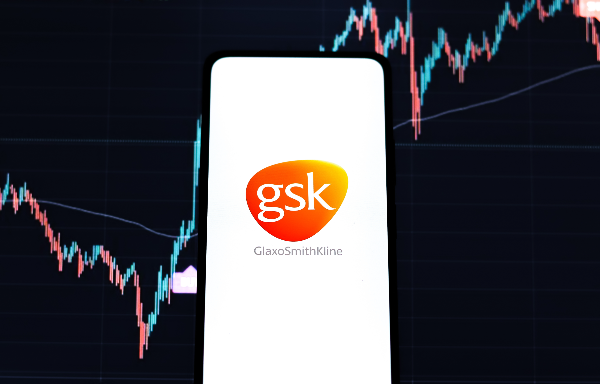



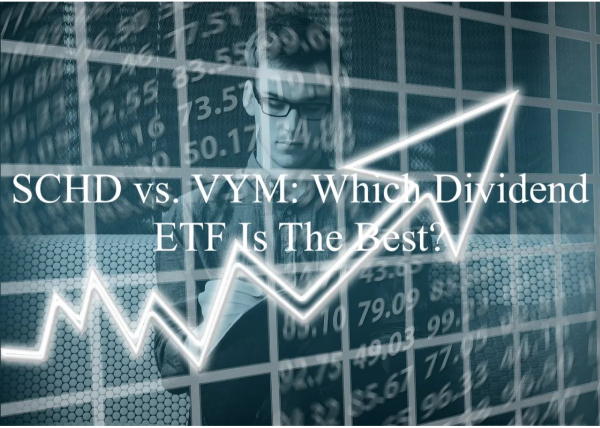
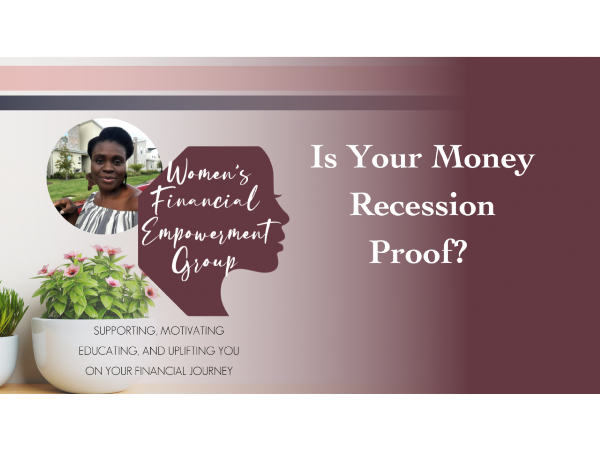

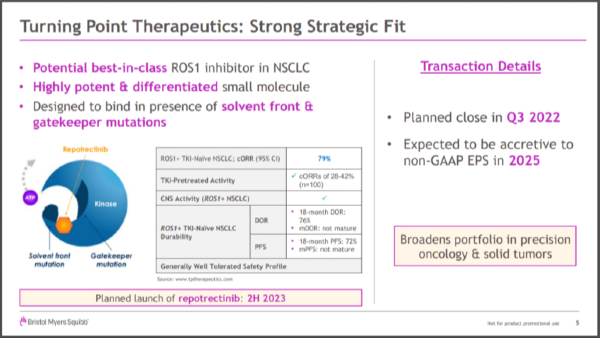




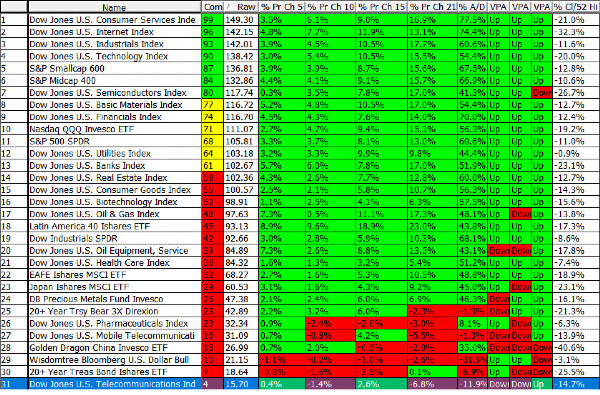





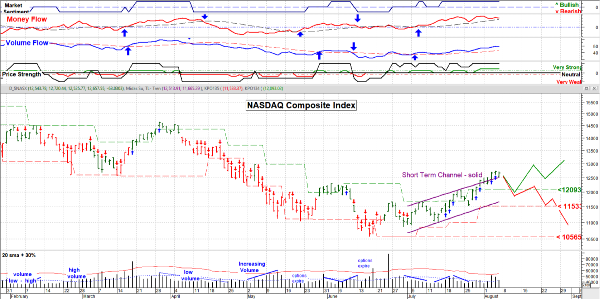








Overview: Ahead of the much-anticipated speech by Federal Reserve Chair Powell, the Fed funds futures are pricing in about a 70% chance of a 75 bp hike next month. The US 10-year yield is up nearly five basis points today to 3.07% and the two-year yield is firm at 3.38%. Asia Pacific equities were mostly higher, with China the main exception among the large markets, after US equities rallied yesterday. Europe’s Stoxx 600 is off about 0.3% to bring this week’s loss to a little over 1%. It would be the first back-to-back weekly loss in two months. US futures are seeing yesterday’s gains pared. Europe’s benchmark 10-year yields are mostly 4-8 bp higher. The greenback is mixed with the European currencies mostly higher, led by the euro, pushing above parity where options for 1.5 bln euros expire today. The dollar bloc and yen are nursing losses. The firmer euro tone appears to be lending support to the central European currencies, while the South African rand and Thai baht are off a little more than 0.5% to pace the declines. Gold set the high for the week yesterday near $1765 and is struggling to stay above $1750 today. October WTI is up 1% today and 3.4% for the week. It posted an outside down day yesterday to fall 2.5% but is consolidating quietly today. Europe’s natgas benchmark is off 0.5% to pare this week’s gain to around 25.2% after rallying 20.3% last week. US natgas is gaining for a third day, up 2.2%. It was nearly flat on the week coming into today. Iron ore rose almost 3% to bring this week’s gain to 5.2%, the strongest weekly advance this month. September copper is up 1.4% after yesterday’s 1.5% advance. December wheat is firm after a four-day rally was snapped yesterday. Poor weather is seen behind the week’s 3% gain.
Asia Pacific
Tokyo's August CPI, which does a good job of reflecting national forces, rose more than expected. The headline rate rose to 2.9% from 2.5%, its highest in 30 years. The core measure, which excludes fresh food, stands at 2.6%, up from 2.3%. Several banks are now warning it could surpass 3% in Q4. A little more than half of Japan's inflation stems from fresh food and energy, with which CPI rose 1.4% from a year ago, up from 1.2%. The Bank of Japan meets on September 22 and is expected to remain the outlier among the high-income countries and maintain the current policy setting, with the target rate at -0.10%.
There are three developments in China to note. First, after several initiatives, which individually have been played down by observers as not going far enough, China's high-yield bond market, dominated by the property sector, have shown some new domestic interest. The back-to-back gains are the first in four months. Second, there appears to be some progress in US-China talks about US regulators access to the accounting records of Chinese companies that list on American exchanges. These Chinese companies have been instructed to prepare audit working papers to bring to Hong Kong to be reviewed by US officials. Although mainland equities have languished this week (CSI 300 is off 1%), Hong Kong stocks have rallied. The Hang Seng gained 2% this week, half of which came earlier today. The HK China Enterprise Index (mainland companies that trade in HK) rose 3% this week. Third, dubbed teapot, the independent oil refiners in the Shandong province have cut their run-rates to 61.3% this week, the lowest since May. This seems to reflect the poor state of the economy, hampered by the extreme weather and shortage of electricity.
The dollar rose 2.65% against the yen last week but has gone nowhere in recent day. It continues to chop in Tuesday's range (~JPY135.80-JPY137.70). The ranges have gotten steadily narrower. Today's range has been roughly JPY136.40 to JPY137.15. Two images come to mind, a spring coiling (dollar bullish) or a sideways affair. Momentum indicators are mixed. The exchange rate still seems sensitive to US interest rate developments. The Australian dollar reached a six-day high yesterday near $0.6990, and although it closed firmly, there has been no follow-through buying. It has consolidated down to $0.6950. A convincing move through $0.6940 may refocus attention on the downside. The PBOC again set the dollar's reference rate lower than the market (Bloomberg survey) expected at CNY6.8468 vs. CNY6.8542. The gap was half of yesterday's, which was the most since February 2020. Nevertheless, the market still extended the greenback's gains. Around CNY6.8620, the dollar is up about 0.2% today and 0.65% for the week. If sustained, it will be highest weekly close since August 2020.
Europe
The record of last month's ECB meeting, where it delivered its first rate hike with a half-point move did not tell us anything we did not already know. First, the rise in inflation to near 9% was the catalyst for the rate hike. That there were some who wanted a quarter-point move is not surprising. The preliminary estimate of this month’s CPI will be released on August 31. The month-over-month pace is expected to rise by 0.3% after a 0.1% gain in July. However, the base effect will translate this in a slightly slower year-over-year rate (8.8%). The core rate is expected to be steady at 4.0%, though the risk is on the upside. The market has fully priced in a 50 bp hike at the September 8 meeting, the swaps market is consistent with around a chance of 75 bp move, which seems a bit exaggerated. While there is some debate in the US whether inflation has peaked, in the eurozone this may be a brief respite.
Like the FOMC minutes, the ECB's record of its meeting should not be understood as an objective report of the meeting, but another channel by which officials communicate to the market. In its record, the ECB insists that the 50 bp rate hike should be seen accelerating removal of accommodation, what it calls front-loading, rather than raise the terminal rate. While many press accounts repeated it, the market seems less sanguine. Consider that on July 1, the swap market had the policy rate at 1.23% in mid-June 2023. Now it is 1.77%. ECB officials were cognizant that the economies were slowing, and a recession may be near. However, in what seems to be an innocuous comment observed that governments may be better positioned to address it. What is striking is that this goes against ordoliberalism, which Draghi and others said its part of the ECB's DNA. Ordoliberalism reject Keynesian demand management through fiscal policy.
We had thought there was a quid pro quo at the July ECB meeting, which allowed for the larger rate hike in exchange for the new Transmission Protection Instrument. However, if this was case, the hawks have the advantage. There appear to be so many hurdles to its use that, like the Outright Market Transactions (announced with Draghi's "whatever it takes") it may never be used. The ECB's record indicated that the Governing Council would take into account analysis by the EC, the European Stability Mechanism, the IMF, "and other institutions", alongside the ECB's own analysis, with no ranking provided. Unlike the OMT, which was to be triggered at a country's request, the TPI is done at the ECB's discretion.
The euro slipped through yesterday's low by a couple hundredths of a cent in Asia but has come back bid in Europe, and pushed above $1.00, where options for 1.5 bln euros expire at the same time today that Fed Chair Powell is scheduled to begin presenting in Jackson Hole. The single currency has not closed above parity this week and set a new 20-year low on Tuesday slightly ahead of $0.9900. It seems like the recent price action is more about market positioning than new developments. Sterling set a range on Tuesday between $1.1720, a new 2-year low, and $1.1880. It has not traded out of that range in subsequent action. Near $1.1825, sterling is virtually flat this week against the dollar and about 0.35% first against the euro. Press reports suggest that Truss, who looks set to become the new Prime Minister in a couple of weeks could trigger Article 16 that would allow the suspension of some parts of the Northern Ireland protocol as early as September 15, when the existing arrangements that allowed for easier checks expire. Between this, Italy's election on September 25, and the ongoing energy and extreme weather challenges cast a pall over the outlook.
America
Fed Chair Powell's long-awaited speech at Jackson Hole is a few hours away, and the market is pricing in about a 70% chance that the Fed hikes 75 bp next month. Of course, there is important data due before the FOMC meeting concludes on September 21 including the jobs report next Friday and CPI on September 13. Still, it is unlikely that either report changes that overall assessment that the labor market remains strong, even if job growth slows a bit from the unexpectedly sharp 528k jump in July nonfarm payrolls, and that price pressures are far too high, even if the pace eases a little. Those who insist on reading Powell dovishly seem to be focusing on the line in the recent FOMC minutes, which noted that many members recognized the risk that the Fed could overdo it. However, what these observers seem to under-appreciate is that the observation was in the context of a general assessment of the risks and the minutes recognized an even greater risk that inflation expectations get embedded. Indeed, in recent weeks there have been numerous essays claiming that the era of low inflation is over, due to various structural factors, including the re-shoring and pullback from globalization, the integration of large populations in central Europe and Asia, and the costs of sustainable development.
We do not think Powell is as dovish as the many pundits argue, and despite this era for forward guidance, we think it best to focus on what the Fed does rather than what it says in this context. Among the high-income countries, no central bank has been as aggressive as the Federal Reserve, even if some like the Bank of England began normalizing policy earlier. In addition, starting in a few days, the pace that the Fed will shrink its balance sheet will double to $95 bln a month. If dovish and hawkish are to signify anything of importance, they cannot be understood in the abstract, but placed in a context. By the Fed's own history, and in comparison, to other high income central banks, several of whom have higher inflation than the US, it has acted expeditiously this year and knows that it is not done. Many of those who criticize the Fed for not being even more aggressive are also among those that have the most pessimistic economic outlooks. It is an easy space to occupy if one is not held accountable. For whom do they speak? Even the hawks at the Bundesbank are not hawkish enough for many of these critics.
Play the player or play the game? What Powell actually says may not means as much in the short run as to how the market responds. Consider the FOMC minutes again. When they were initially reported, the pundits said it was dovish and the December Fed funds futures made new session highs on August 17 and follow-through buying the next day. We insisted that a dovish reading was a mistake, and although the subsequent economic data have mostly been weaker than expected, the December Fed fund futures have sold off and the implied yield rose to new highs for the month (~3.54%) yesterday. Similarly, since those "dovish minutes" were released, the implied yield of the October Fed funds futures contract (no FOMC meeting in October, so arguably a cleaner read than the September contract) has risen by 5.5 bp, reflecting perceptions of heightened. Rather than focusing on Powell's exact words, we suspect it may be more fruitful to focus on the market's penchant for reacting as if the Fed were dovish.
Ahead of Powell, the US reports a bevy of data, which include the advanced estimate of US merchandise July trade figures, and inventory, and personal income and consumption data. Given the importance attributed to Powell's speech, the data is likely to be more important for economists as they work on their Q3 GDP forecasts than market participants. The PCE headline deflator, which the Fed official targets are expected to slip toward 6.4% from 6.8%. The core deflator is projected to tick lower to 4.7% from 4.8%. The CPI, which comes out first, and is based on different methodology, has stolen the deflators thunder and was cited by Powell in explaining the larger-than-signaled hike in June. Mexico also reports July trade figures today. Mexico's trade balance is deteriorating sharply. The Q2 monthly average deficit was $2.69 bln. In Q2 21, it was in surplus by $927 mln. This has been blunted a little by surging worker remittances, and the July report is next week. Worker remittances averaged $5.01 bln in a month in Q2 22 (vs. $4.3 bln in Q2 21).
The US dollar set a five-day low yesterday, slightly below CAD1.2900. It was probing the CAD1.3060 area in the first two sessions this week. It is near CAD1.2935 in the Europe, and it needs to resurface above CAD1.2960-80 to open the upside again. If the yen takes its cues from US yields, the Canadian dollar takes its from the general risk appetite reflected in the US S&P 500. Initial support is seen now near CAD1.2920. The US dollar slipped to seven-day lows against the Mexican peso yesterday (~MXN19.85) and recovered through the North American session to MXN19.98. It is trading sideways today above MXN19.92. The intraday momentum readings seem to favor the dollar's upside today provided that the MXN19.90 area holds.
Originally Posted on marctomarket.com